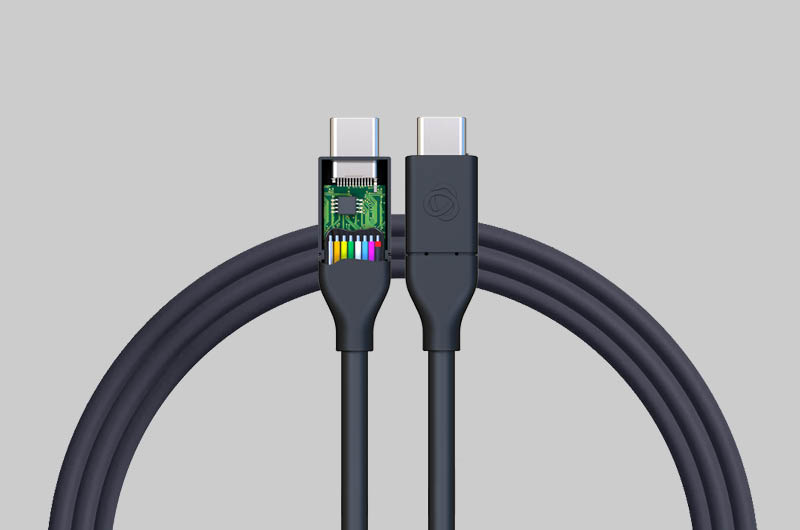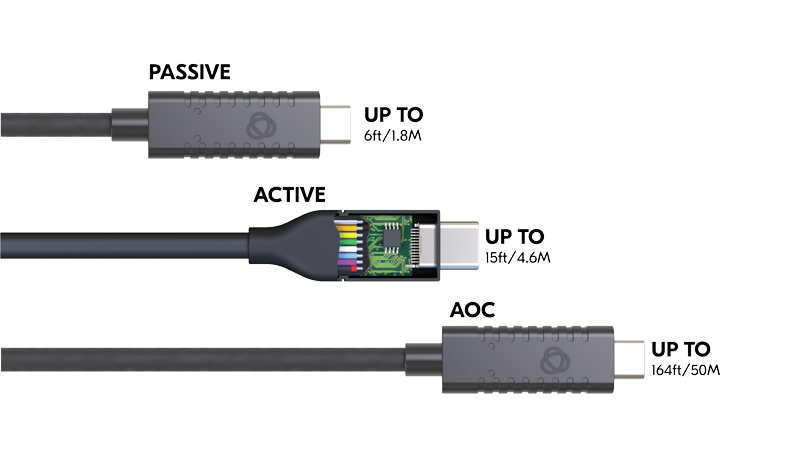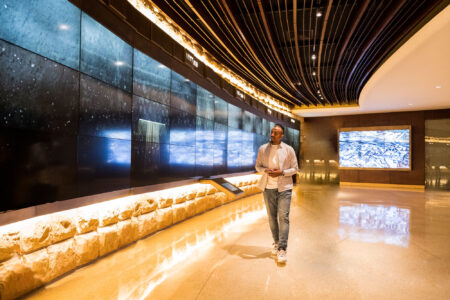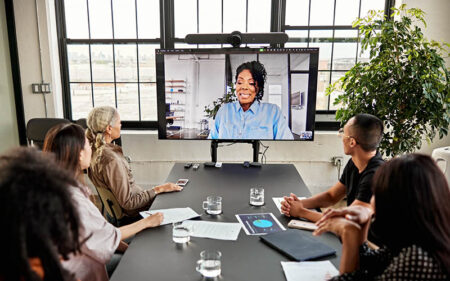April 17, 2023
USB-C: The Future of Pro AV Connectivity?

Have you ever walked into a meeting and wasted too much time trying to set up the equipment and get started? Or maybe you’ve experienced the frustration of scrambling to find the right cables, causing the meeting to start late?
If this sounds familiar, you’re not alone. But what if there was a better solution?
USB-C is the cable connector protocol that’s already widely used in consumer devices like cell phones and tablets, and it is becoming increasingly popular in laptops as well. With USB-C, you can deliver high-quality video, data transfer, Ethernet, and even charging power of up to 240W, all over a single cable.
As a Product Manager in the Pro AV market, I often wonder: could USB-C eventually replace HDMI for some applications? USB-C’s versatility, supporting video, data and charging, along with its increasing standardization make it a strong contender for Pro AV installations. And according to research companies like Futuresource, USB-C is already becoming more popular than HDMI, with triple the number of USB-C connectors predicted to be in the market by 2025.
One cable to rule them all
USB-C is a versatile and powerful interface that offers several advantages over its predecessors. First and foremost, USB-C supports 4K60 video and faster data transfer speeds, making it possible to transfer large files and stream high-quality video with ease. Additionally, USB-C cables are reversible, meaning that you can plug them in any orientation, saving you time and frustration. Furthermore, USB-C can carry more power than previous USB types, allowing you to charge your devices faster and even power larger devices like laptops. Finally, USB-C is becoming increasingly popular among device manufacturers, which means that you can use a single USB-C cable to charge, transfer 4K60 video and data between multiple devices, making it a convenient and future-proof choice for all your connectivity needs.
Let’s dive deeper into the benefits of USB-C for Pro AV installations. In most meeting rooms, the tangle of cables is a familiar sight, with one cable for video, one cable for Ethernet, one cable for the webcam, one cable for the mic, and one cable for laptop charging. But with USB-C, you can say goodbye to cable chaos, and hello to a single cable solution. Think about a display that gets power, Ethernet, a webcam, a mic, and speakers. Now imagine that all these signals connect to your laptop using one USB-C cable. The result? A clean, clutter-free workspace that allows for faster and more efficient meetings.
It’s worth noting that while USB-C has most of the features required for Pro AV installations, there are two significant challenges that need to be addressed: the Unreliable connection and the length limitation.

Overcoming USB-C’s main challenges: unstable connection and length limitation
One of the major challenges of using USB-C in Pro AV installations is its unstable connection, a result of the connector’s slim and frictionless fit, which means that it doesn’t have any locking mechanism or other mechanical means to ensure a reliable connection.
To address this issue, Kramer has developed a unique solution in the form of a locking mechanism integrated into the cable, ensuring a secure connection by keeping the cable locked in place. The K-Lock locking mechanism provides a 30N pulling force, which is four times the robustness of a regular USB-C cable. Through our lab tests, we’ve found that this mechanism strikes the perfect balance of providing a reliable connection without damaging your laptop connector.
We’ve designed the K-Lock mechanism to be an integral part of the connector, while still maintaining the reversibility of the cable. As a result, system integrators can enjoy the peace of mind that comes with a reliable and stable connection, without the added stress and lost opportunities that come with disconnected cables.
Another challenge is the length limitation of USB-C cables. Most USB-C cables are only a few feet long, limiting their use in larger Pro AV installations.
USB 3.2 Gen 2 is defined as 1-meter cable. You may find 2-meter USB 3.2 Gen 2 in the AV market, but it’s definitely not enough for Pro AV installations. However, innovations like cables that can reach up to 164ft are poised to make USB-C a major player in the Pro AV world.
Kramer’s R&D department has successfully developed USB-C cables that can reach an unprecedented length of 164ft (50m) without sacrificing any of the USB-C features, such as high-quality video, fast data transfer, Ethernet, and up to 60W power charging. This allows users in large meeting rooms to access all USB-C features from any point to another, using just a single cable with a 5.2mm diameter.
Kramer’s long-distance USB-C cables are made with high-quality materials and advanced signal processing technologies to ensure that all signals remain stable and reliable, even over long distances. This makes them an ideal solution for a wide range of applications, from classrooms and conference rooms to auditoriums and concert halls.
Will USB-C replace HDMI?
Now, let’s answer the question of whether USB-C could eventually replace HDMI for some applications in the Pro AV market. USB-C’s ability to support multiple functions such as charging, data transfer, and video output over a single cable is a huge advantage.
As the industry continues to evolve, we can expect USB-C to become an increasingly prominent player in the market. While it may not fully replace HDMI, it will certainly occupy a growing share of the market, particularly in situations where multiple signals are required.
Thanks to innovative solutions like the ones developed by our team here at Kramer, we can expect USB-C to continue to overcome consumer limitations and become an essential part of modern AV systems. With its flexibility, convenience, and impressive performance, it is clear that USB-C is here to stay, and we can’t wait to see what exciting new developments and possibilities it will bring to the AV industry in the years to come.









